Crop diseases and pests represent a critical threat to agricultural productivity and sustainability. Prevention is the most effective and economical strategy, as treating crops after infection is less efficient and carries higher risks. This article delves into available prevention and management methods, covering cultural, biological, chemical, and organic strategies to maintain healthy crops and ensure food security.
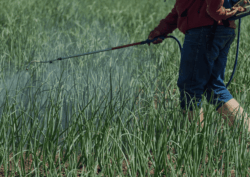
Early Monitoring and Diagnosis
Constant monitoring of crops allows for the early detection of symptoms of diseases and pests. This helps to:
- Apply preventive treatments on time
- Prevent the spread to neighboring crops
- Reduce unnecessary use of agrochemicals

Cultural Control
Cultural control involves agricultural practices that reduce the risk of infection or pathogen development:
- Crop rotation: Helps break the life cycle of soil-borne pathogens.
- Use of certified seeds: Ensures seeds are disease-free or resistant to specific pathogens.
- Removal of infected crop residues: Reduces the source of inoculum for new infections.
- Proper soil drainage: Prevents moisture accumulation that favors fungal spread.
- Preventive pest management: Monitoring and controlling pests helps manage insect vectors of diseases.
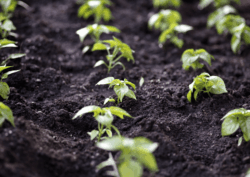
Biological Control
Biological control uses living organisms to combat pathogens. Examples include:
- Beneficial fungi such as Trichoderma spp: Act as biocontrol agents against soil-borne pathogenic fungi, improve plant growth, nutrient uptake, and enhance plant resistance.
- Bacteria such as Bacillus spp: Inhibit the growth of pathogenic microorganisms while promoting plant growth and soil fertility.
- Insects and mites: Serve as natural enemies of pest insects that vector viral diseases, reducing the need for chemical treatments.
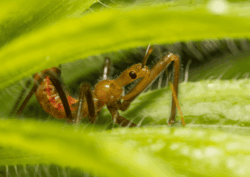
Chemical Control
Involves the use of fungicides, bactericides, or nematicides to prevent or control infections. It is recommended to use low-phytotoxic agrochemicals. Monitoring crops and preventive management help reduce chemical use and minimize residues in plants, soil, and water.
Use of Organic Products in Crop Disease Management
Proper nutritional management strengthens plants, making them less susceptible to diseases. Bio-stimulants such as fulvic acid improve the uptake of macro and microelements, enhancing plant resilience.
Key organic methods include neem oil and amino acid compounds, which offer safe and effective alternatives to traditional disease control.

Neem Oil
Extracted from Azadirachta indica seeds, neem oil is a broad-spectrum biorepellent and biofungicide. Compounds like azadirachtin interfere with pest life cycles and reduce fungal spore spread.
Benefits of neem oil:
- Repels and controls insect vectors of viral and bacterial diseases
- Inhibits spore germination, reducing fungal infections like mildew, powdery mildew, and blights
- Biodegradable and compatible with Integrated Pest Management (IPM) programs
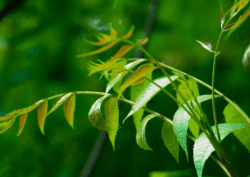
Amino Acid Compounds
Amino acids act as biostimulants, strengthening the plant’s natural resistance, supporting metabolic processes, and helping crops withstand stress, indirectly reducing disease susceptibility.
Benefits:
- Enhance protein synthesis linked to plant defense
- Aid crop recovery after infections or adverse conditions
- Improve nutrient absorption and enzymatic activity, resulting in more vigorous, disease-resistant plants
Together, neem oil and amino acids help prevent and control diseases while promoting healthier, more balanced, and sustainable agriculture. Their integrated use with cultural, biological, and genetic practices enhances crop protection, ensuring higher productivity and quality.
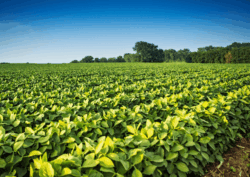
In conclusion, pest and disease control in crops is essential for agricultural productivity and sustainability. The diversity and adaptability of pathogens require an integrated, multidisciplinary approach. Prevention remains the most effective tool, combining cultural practices, resistant varieties, and biological control.
Frequently Asked Questions (FAQ) about Pest and Disease Control in Crops
- What are agricultural pests and diseases, and why are they dangerous?
Agricultural pests and diseases are organisms or agents (fungi, bacteria, viruses, insects) that attack crops, reducing yield and quality. They can cause significant economic losses and threaten food security.
- What are the most effective methods to prevent pests and diseases in crops?
The most effective methods include early crop monitoring, crop rotation, use of certified seeds, biological control, and responsible use of chemical and organic products such as neem oil and amino acids.
- What is biological control, and how does it protect crops?
Biological control uses living organisms like fungi (Trichoderma spp), bacteria (Bacillus spp), or insects and mites to combat pests and pathogens. It reduces reliance on chemicals and promotes healthier, more resistant crops. - What role do organic products play in managing pests and diseases?
Organic products such as neem oil and amino acids strengthen natural plant resistance, control insect vectors, inhibit spore germination, and improve overall plant health sustainably.
- Why is an integrated approach important for pest and disease control?
An integrated approach combines cultural, biological, chemical, and organic practices to effectively protect crops, increase productivity, and minimize environmental impact.





 (956) 574-8280
(956) 574-8280 info@ferti-organic.com
info@ferti-organic.com